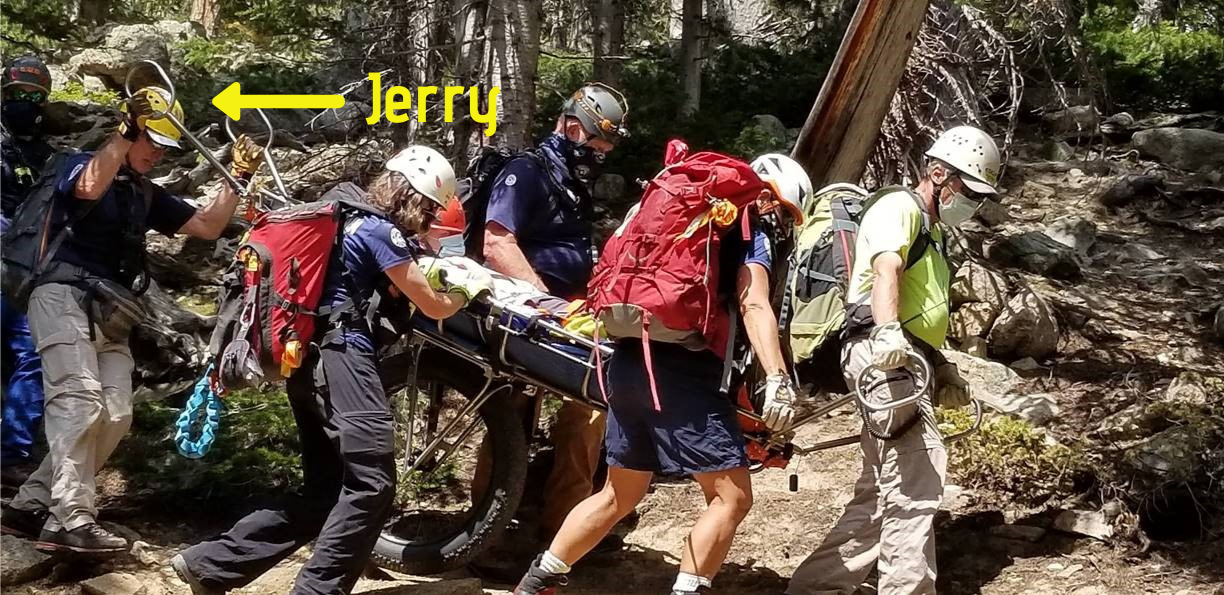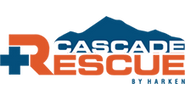The Innovation Integration Conundrum
Posted by Tom Wood on 13th May 2021
C'mon, let's admit it. In the world of Search and Rescue, when it comes to the integration of advances in rescue technology, we fear change. Sometimes with good reason, but all too often, not so much. Proposing changes to the way we save lives can challenge long standing dogma and tradition within our respective organizations.
This love/hate relationship with better SAR mousetraps was really driven home for me during a recent body recovery performed by my mountain rescue team.
Let me back up for a moment and state that I am blessed (or maybe cursed) to wear a bunch of different rope/rescue hats. Though I have worked for rescue equipment manufacturers since MySpace was the preeminent form of social media, I was also a mountain rescuer before Y2K threatened all of humanity. So while my day job tasks me with providing input on products designed to make rope access and rope rescue faster/more efficient/safer, my backcountry rescue brain often considers each new shiny widget proposed for implementation to my own rescue team with healthy skepticism at best - outright distrust at the worst.
When Cascade Rescue introduced their two piece Titanium Professional Series Litter/Terra Tamer Litter Wheel/Equalizer Handle patient transport system to the world at the Mountain Rescue Association (MRA) Conference in 2017, I had a hard time believing that only two rescuers could transport an injured subject so easily over rough terrain without a belay on steep terrain, in spite of seeing demo after demo that seemed to prove otherwise. But my rescue team was impressed, and decided to implement Terra Tamer Wheel. But without the Equalizer Handles. Or the hand brake.
We didn’t need no steenkin’ hand brake, we had Jerry.

Most mountain rescue teams have a Jerry: A person who shows up at most of the missions and has a role at which they excel. Jerry was our team’s designated human travelling belay/braking system when we had a wheeled litter going down steep terrain. Rope tied to the back of the litter, he would typically help keep it on belay while our 4-6 attendants kept the head slightly up and without leaning too much left or right on the side hills. We had very well practiced litter attendant swaps orchestrated every couple hundred feet, and were masters at the trail pass over obstacles. This, and other procedures, were documented in great detail within the pages of our 400-plus page rescue team bible.
But while the Terra Tamer became our wheel of choice, we resisted the change to our methodologies that would be required if we employed only two attendants using the hand brake and the Equalizer Handles to operate the whole system the way it was intended. We didn’t want to change the decades-long tradition of how we trained and executed carry-outs. And maybe, just maybe, we thought we were smarter than the manufacturer. We knew our business better than anyone, and no one was going to tell us how to do our job. Sound familiar to any other folks out there?
Fast forward a couple of years. We finally purchased a set of Equalizer Handles, and gave them a whirl. We still utilized our tried and tested Jerry belay system, and still used 4 attendants. But try as we might, we couldn’t figure out why the wheel kept tracking sideways on switchbacks. We had to constantly pick up the whole litter and re-center the wheel to keep it from leaning to one side or the other.
We’ve all heard the phrase that bad car mechanics blame their tools when a job doesn’t go as planned. It’s the same for us rescue mechanics. OBVIOUSLY, something was wrong with the wheel, the handles or the litter. Or Jerry. Maybe all the above.
We began to question our choice of this new-fangled litter, wheel and handle system as our primary means of patient transport. Maybe the old way was better after all.
As a last ditch effort to right the ship, we ordered the hand brake and installed it. And after some preliminary testing during one of our first post-COVID 19 in-person, socially distanced and masked up trainings, we felt that maybe it was okay to put the system into service.
But as we all know, what works on trainings doesn’t always fly when it comes to performing actual rescues. Hence our hesitancy to drink the Kool Aid and use this system the way it was designed and built: With two attendants and no Jerry belay.
Last month, we had the chance to put the system to the test. We had the mentally and physically difficult task of evacuating a deceased pilot after his single engine plane crashed into the side of the mountain deep in a remote corner of our response area. The terrain was a nightmare to hike in, let alone for performing a long technical evacuation. Three plus miles of waist deep snow, deadfall and steep terrain had us all worried that we didn’t have enough personnel to perform the carry out. The dozen folks we had at the scene might sound like a lot, but those who have done this before know what a beat down it can be to carry a human being for miles in the backcountry. Twenty rescuers would have been a better number.
But in spite of our best intentions to evolve, we reverted back to the Jerry system with four attendants when we started the carryout. Old habits die hard.
Once again, we were disappointed with our efforts. But this time we called a full stop, dropped two attendants and gave Jerry the day off and instead utilized the hand brake mounted to the Equalizer handle.
Lo and behold, two attendants were able to move our subject easily up and down steep hillsides, over logs, through the snow, with minimal effort or help from others. In fact, once we finally hit the trail, you literally had to run to keep up with the litter. And I saw something happen that I’d never seen before: Rescuers begging to be on the litter. In truth, we could have performed that carry out with just 6 people instead of the twenty that our old method would have required.
So how do we as rescuers deal with the Innovation Integration Conundrum as our choices for rescue equipment keep advancing at such a rapid pace? Surely there has to be a compromise between making change just for change sake and completely ignoring progress in favor of maintaining the status quo.
Perhaps we need to reverse engineer our solutions to match the outcomes we seek and ask ourselves a couple of questions.
1. Does this shiny new widget help us to do our jobs more safely, more efficiently?
2. Will our organization’s culture accept the new widget and commit to the retraining that comes along with it?
If the answer is, “No!” to both of those questions, that might be okay. Sometimes the old ways really are the best ways.
And if the answer is, “Yes!” to question #1 but it’s a, “No!” for question #2, then your organization is going to have some tough discussions ahead. I’ve seen veteran rescuers quit their team in anger over disagreements about the cultural and procedural changes made necessary by adopting new tools.
BUT if the answer to both is, “Yes!” then you should fully embrace those innovative solutions and evolve, as difficult as that can sometimes be. Voice of experience here- follow the manufacturer’s recommendations. And give your Jerry a break.




